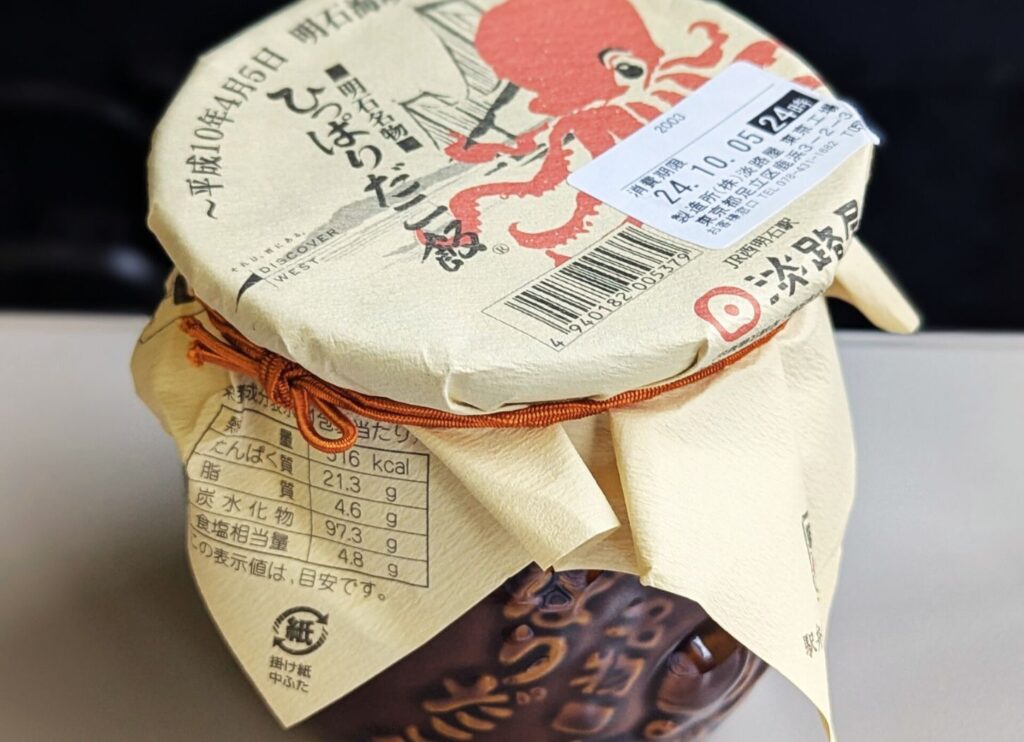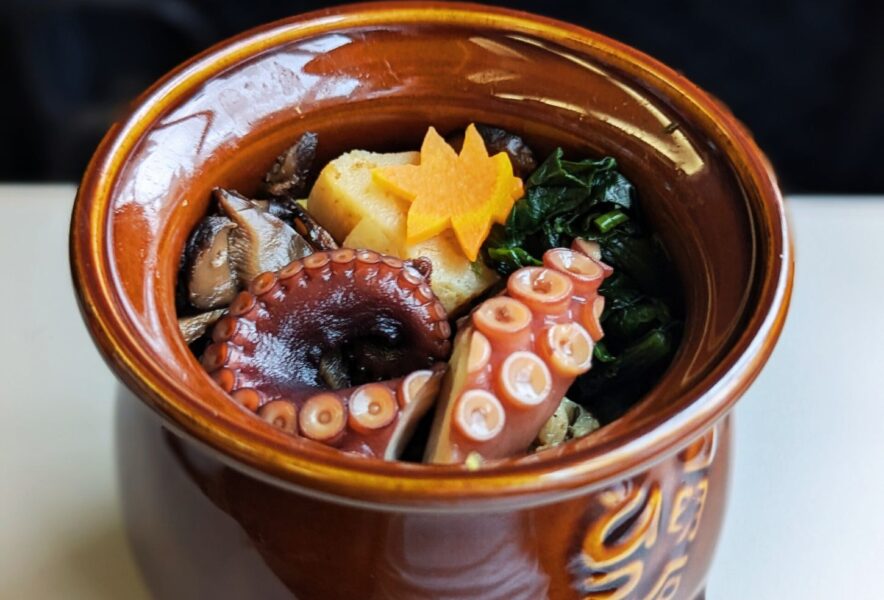Today, we’re diving into the fascinating world of “Hipparidako Meshi,” one of Japan’s most iconic ekiben (train station bento) meals that perfectly captures the essence of Kobe’s culinary heritage. We’ll cover the history of its creator, Awajiya, the unique flavors and design of the dish, and where travelers can find it. Let’s delve into why this delicious bento has become a symbol of both Kobe and Japanese railway culture!

The Origins of Ekiben and Kobe’s Culinary Influence
To understand “Hipparidako Meshi,” it’s essential to first appreciate the cultural context of ekiben. Ekiben, or train station bentos, emerged as a unique solution for travelers in Japan’s Meiji era. These packed meals were first sold at train stations to nourish travelers on long journeys. Ekiben started with humble ingredients like rice balls and pickles, but they evolved as local vendors realized that they could showcase regional flavors and specialties.
In Japan, ekiben became more than just sustenance; they became regional representations. Each ekiben is thoughtfully designed to reflect local ingredients, culture, and even seasonal themes. Kobe, with its international port and diverse history, quickly became a hub of ekiben innovation, where the city’s blend of traditional Japanese and Western influences created an environment ripe for culinary creativity. By bringing Kobe’s flavors to travelers nationwide, Awajiya and “Hipparidako Meshi” help preserve the city’s cultural heritage.
Awajiya: Pioneering Ekiben in Kobe
Awajiya’s journey in the ekiben industry began in 1903, about three decades after Japan’s first known ekiben was sold in Kobe in 1877. Awajiya’s founder, Hidezaburo Teramoto, originally ran a traditional restaurant called “Awa-u” in Osaka’s Sonezaki district but saw the potential of railway bento as a new business opportunity. He introduced Awajiya’s first ekiben, and before long, their distinct flavors and quality made Awajiya a beloved choice among travelers.
Through Japan’s turbulent history, including wartime closures and economic challenges, Awajiya has stood resilient, continuously innovating and capturing the taste of the Kobe region. Today, the company continues to prioritize both authenticity and innovation, bridging traditional flavors with contemporary tastes.
The Magic Behind “Hipparidako Meshi”
The famous “Hipparidako Meshi” was launched in 1998 to commemorate the opening of the Akashi Kaikyo Bridge. Awajiya crafted this bento with a unique twist: a small, ceramic octopus-pot container inspired by traditional tako-tsubo (octopus traps) used by local fishermen. This octopus theme is a nod to Akashi’s reputation as one of Japan’s prime octopus-producing regions, which has been a staple in local dishes for generations. But what really makes “Hipparidako Meshi” so special? Let’s break it down:
1. Fresh, Local Ingredients
Awajiya uses locally sourced ingredients that highlight Kobe and Akashi’s coastal flavors. The bento is centered around fresh octopus, which has a slightly chewy, tender texture and is rich in umami. It’s accompanied by anago (conger eel) and seasonal vegetables, all selected from nearby regions to ensure the freshness and quality that distinguish Awajiya’s ekiben from others.
2. Unique Cooking Techniques
The octopus and anago are prepared using techniques passed down over the years to bring out the best in each ingredient. The octopus is slow-cooked to enhance its natural flavors, while the anago is lightly grilled, giving it a savory, smoky edge. Combined with a bed of carefully seasoned rice, each bite is layered with taste that brings the richness of the sea to your palate.
3. Iconic and Reusable Pot
What sets “Hipparidako Meshi” apart from other bentos is the adorable, octopus-pot container. Inspired by local octopus traps, this ceramic pot serves both as a container and a keepsake. It’s a compact, sturdy pot that doubles as a memento of your Kobe journey—many travelers collect these pots as souvenirs, appreciating both their aesthetic appeal and utility.
4. A Feast for the Eyes
The presentation of “Hipparidako Meshi” is as delightful as its taste. The colorful ingredients are arranged thoughtfully within the pot, allowing you to see each component and enjoy the bento visually before tasting. The octopus motif and vibrant veggies create a charming, Instagram-worthy bento that’s instantly recognizable.
5. Strong Sense of Regional Identity
With its emphasis on locally sourced octopus, “Hipparidako Meshi” embodies the essence of Akashi and Kobe. Awajiya’s dedication to celebrating local ingredients showcases the pride Kobe takes in its culinary identity, making “Hipparidako Meshi” not just a meal but a flavorful ambassador of the city.
Where to Buy “Hipparidako Meshi”
While “Hipparidako Meshi” is incredibly popular, it’s not always easy to find due to its limited distribution. Here are some of the main stations where you’re likely to find it:
- JR Kobe Station: Awajiya’s headquarters are located near this station, making it a primary location for “Hipparidako Meshi” sales.
- Shin-Kobe Station: With a shinkansen (bullet train) stop, Shin-Kobe Station is a convenient spot to grab this bento while on a long-distance journey.
- JR Nishi-Akashi Station: Located in Akashi, this station often stocks “Hipparidako Meshi” due to its proximity to the octopus-rich waters of the Akashi Strait.
- JR Osaka Station and Shin-Osaka Station: Since 2000, Awajiya has delivered “Hipparidako Meshi” to these stations as well, making it accessible for travelers starting their journey in Osaka.
- Tokyo Station: Travelers heading out of Tokyo can sometimes find “Hipparidako Meshi” here, but it’s best to check availability as it can vary by season.
Concluding Thoughts: A Taste of Kobe’s Heart
In summary, “Hipparidako Meshi” is more than just a bento; it’s an edible piece of Kobe’s rich cultural heritage, bringing together traditional flavors, artful design, and a strong regional identity in a small pot. Awajiya’s dedication to quality and regional authenticity has helped this bento become a beloved symbol of Kobe, and it’s a must-try for anyone wanting to experience the spirit of the region through its food. Next time you find yourself in Japan, take a moment to enjoy this unique bento, and you’ll not only taste Kobe’s culinary excellence but also bring home a little octopus pot as a lasting memory of your journey.
Happy travels and happy eating!

Comment